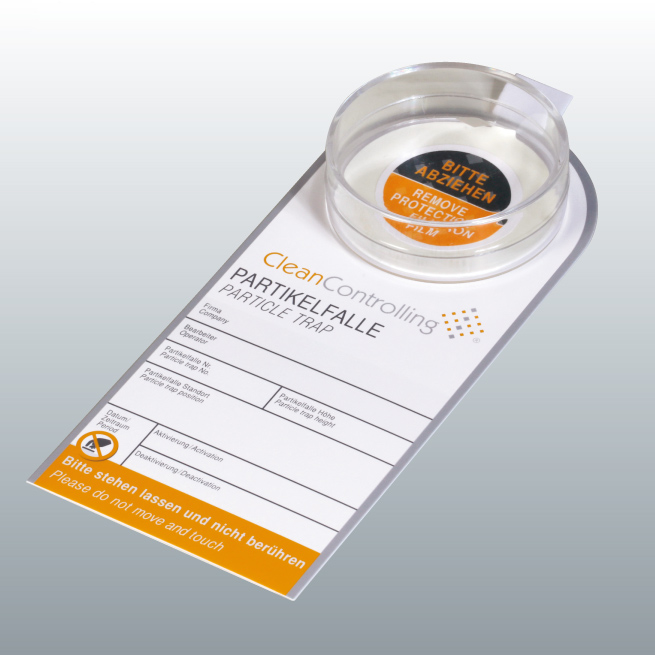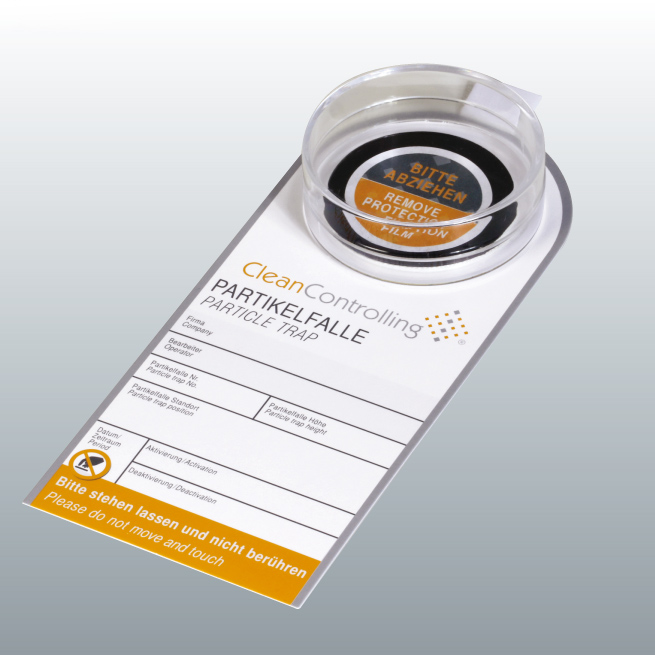Particle trap for monitoring environmental cleanliness
Further installation aspects can be found along a hall grid for performing an indoor monitoring, investigation of processes for the characterization of particle sources, driveways, storage areas, lock areas, etc.
The horizontaly placed adhesive pad absorbs the particles and sediments them. The adhesive pad is homogeneous, not shiny and without particle pre-loading. The adhesive pad is provided with a protective film before activation. The particle trap has a removable mounting option and a labeling card. A lid closes and protects the sedimented particles after deactivation.
The exposure time is 7-10 days.
A supplementary, stereomicroscopic evaluation with the number and size of the particles from a defined particle size as well as a division into shiny metallic particles, non-shiny particles and fibers is possible.
The evaluation can be supplemented by means of a cleanliness or sedimentation number (also called Illig value). The analysis result (particle size distribution) in the individual particle size classes is multiplied by a weighting factor and the weighted particle numbers are summed up. Due to the higher weighting of the larger particles, the growing damage potential is taken into account. The resulting sum value is normalized to an area of 1000 cm² and related to a measuring time of 1 h. The result is the so-called sedimentation number. The use of the sedimentation number has the advantage that the sedimentation results by a unified reference variables is comparable. By compressing the results to one number per measuring point, the results can be better documented and compared more easily, even across divisions and plants, although details are lost.
The usual limit values of the sedimentation number are <50 in cleanroom, <200 in engine cleanroom and <400 in engine assembly. The maximum permissible particle size according to the component specification equals the maximum permissible sedimentation number for ambient cleanliness for component production (usual procedure).
The variants of the particle trap as well as the microscopic evaluation with article numbers can be found in our eShop
How to do: Particle monitoring on youtube
Further Information:
Newsletter registration


